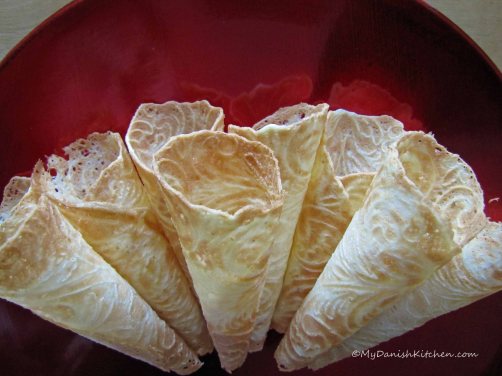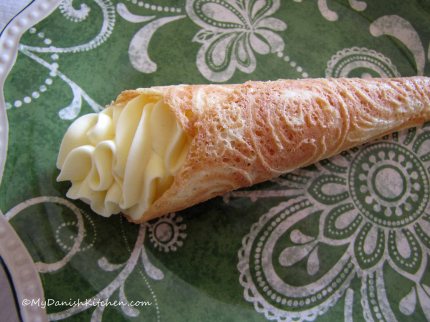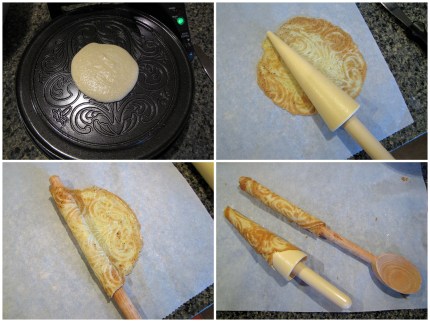Ok, I know it’s not Christmas yet, it is not even December, however, I just get so excited about this time of year 🎅 Anyway, this cookie doesn’t have to be a Christmas cookie, it could be like a little side dessert for any occasion.
Bordstabler are wonderful Norwegian Christmas cookies. They are tender butter cookies with a strip of delicious almond meringue on top. I served these cookies for the Blacksmith gang and the cookies were all gone except for 3 by the end of the meeting.
The dough itself gave me a bit of trouble though. After all ingredients were added it still appeared very soft and tacky but I figured it would set up some in the fridge, which it did, but not enough. So I had to knead the dough while adding more flour until it was smooth and no longer sticky. That being said I have written the recipe up the way I followed it, but you need to know that you’ll probably have to add a little more flour than the recipe calls for and I would add it in as needed while kneading the dough. Even though the dough was temperamental the cookies were well worth the effort. I hope you enjoy these Bordstabler as much as the Blacksmith gang did 🙂
Bordstabler (makes about 25 cookies)
Ingredients:
1 egg yolk
1/2 tablespoon heavy whipping cream
60 g sugar (2.1 oz)
125 g butter, at room temperature (4.4 oz)
125 g flour (4.4 oz), plus more while kneading dough
Filling:
2 egg whites, at room temperature
120 g confectioners’ sugar, sifted (4.2 oz)
120 g almond meal/flour(4.2 oz)
Directions:
Using a hand-held mixer beat together the egg yolk, whipping cream and sugar. While continuing to mix add butter and flour in 1/3 increments until all incorporated. Place dough on a well-floured surface; knead dough adding more flour as needed until dough is no longer sticky. Wrap dough in plastic wrap and refrigerate for a minimum of 1 hour.
Before you take the dough out of the refrigerator, make the filling.
To make the filling: whip the egg whites until stiff. Sift the confectioners’ sugar over the egg whites and add almond meal, fold into egg whites. Place filling into a pastry bag fitted with a tip of your choice (I used# 21) and set aside. If you don’t have a pastry bag and tip, simply just spoon the filling onto dough.
Preheat oven to 345 degrees F (175 degrees C). Line two large baking sheets with parchment paper.
Sprinkle your work surface with flour and roll the dough out to 2 mm thickness. Using a pastry cutter, cut out the cookies to a 2 x 10 cm rectangle (0.8 x 4 in). Gently lift up dough rectangle and place on baking sheet. Using your pastry bag squeeze a long strip of filling onto each dough rectangle.
Bake for 10 minutes or until golden. Allow to cool on baking sheet for a few minutes before moving cookies to a cooling rack.
Source: adapted from dinmat.no




















































